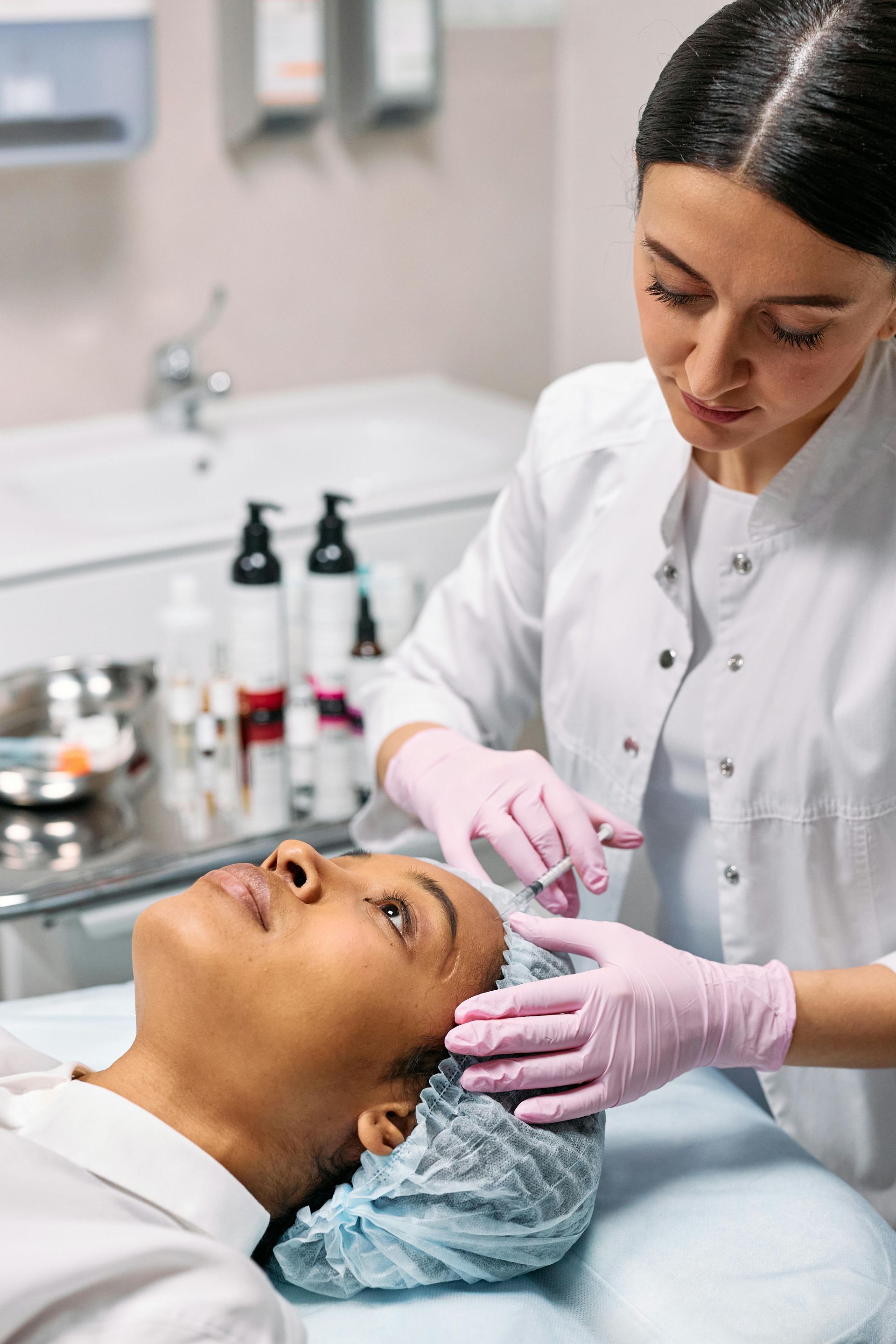Choosing to pursue breast augmentation is a significant decision that deserves thoughtful preparation. Your initial consultation with a board-certified plastic surgeon sets the foundation for your entire surgical journey, from understanding your options to establishing realistic expectations about your results. When you walk into that first appointment prepared with the right questions and information, you position yourself to make confident, informed decisions about your care.
At 5280 Plastic Surgery, we believe the consultation is where the partnership between surgeon and patient truly begins. This is your opportunity to share your aesthetic goals, learn about surgical techniques, and determine whether breast augmentation aligns with what you hope to achieve. The more prepared you are for this conversation, the more productive and reassuring your consultation will be.
1. Understanding What Breast Augmentation Can and Cannot Do
Breast augmentation enhances breast size and can improve shape, but it works best when expectations align with realistic outcomes. This procedure uses implants to increase breast volume, create better symmetry, and restore fullness that may have been lost after pregnancy or weight changes. When performed by a skilled surgeon, the results should look proportionate to your frame and harmonious with your natural anatomy.
However, breast augmentation alone may not address significant sagging or drooping. If your breasts have lost elasticity or sit noticeably lower on your chest wall, you might benefit from a breast lift instead of, or in combination with, augmentation. This is exactly the kind of honest guidance you should expect during your consultation. A board-certified plastic surgeon will evaluate your unique anatomy and recommend the approach most likely to achieve your desired outcome.
It's also important to understand that breast augmentation creates enhancement, not perfection. Every patient's chest wall anatomy, breast tissue characteristics, and skin quality are different. Your surgeon will work with these individual factors to create results that look natural and balanced for your body. During your consultation, ask to see before-and-after photos of patients with similar body types and aesthetic goals to yours.

Understanding these realities helps you approach your consultation with a clear perspective. Rather than bringing in celebrity photos or unrealistic expectations, focus on discussing proportion, symmetry, and how enhancement will work with your existing anatomy. This honest conversation is the cornerstone of successful surgical outcomes.
2. Preparing Your Medical History and Current Medications
Your complete medical history provides critical information that influences surgical planning and safety. Before your consultation, take time to compile a comprehensive list of any medical conditions you've been diagnosed with, surgeries you've undergone, and medications you currently take, including supplements and over-the-counter drugs. Even conditions that seem unrelated to breast surgery can affect anesthesia choices, healing capacity, or surgical risk.
Pay special attention to any history of breast-related concerns. Have you had previous breast biopsies, cysts, or abnormal mammograms? Do you have a family history of breast cancer? These factors don't necessarily prevent you from having breast augmentation, but they do inform the surgical approach and may influence follow-up care recommendations. Your surgeon needs this complete picture to develop the safest, most appropriate treatment plan for you.
Certain medications and supplements can increase bleeding risk during surgery. Blood thinners, anti-inflammatory medications, vitamin E, fish oil, and many herbal supplements all affect blood clotting. Don't stop taking any prescribed medications without your doctor's guidance, but do bring a complete list to discuss. Your surgeon will provide specific instructions about which medications to continue, which to pause temporarily, and when to make these adjustments.
Smoking significantly impacts surgical outcomes by reducing blood flow to healing tissues and increasing complication risks. Be honest about your tobacco use, including cigarettes, vaping, and smokeless tobacco. Most plastic surgeons require patients to quit smoking for several weeks before and after surgery. This isn't a judgment, it's a medical necessity for your safety and optimal healing. Your consultation is the time to discuss smoking cessation resources and timeline expectations.
3. Defining Your Aesthetic Goals Clearly
Walking into your consultation with clear aesthetic goals helps your surgeon understand what you hope to achieve, but communicating these goals effectively requires more than just stating a cup size. Think about what specifically bothers you about your current breast appearance. Are you seeking more fullness in the upper pole? Better symmetry between breasts? A more proportionate silhouette? These specific observations help your surgeon address your actual concerns rather than making assumptions.
Consider bringing photos that represent the type of results you find appealing, but understand that these serve as communication tools rather than blueprints. Your surgeon can't recreate another person's results on your body, but images help illustrate the overall aesthetic you're drawn to, whether that's a natural, subtle enhancement or more dramatic volume. Be prepared to discuss not just size, but also shape preferences, how clothing fits, and how you want to feel in your body after surgery.
Think about your lifestyle and how breast augmentation fits into it. Are you planning future pregnancies? Do you participate in activities that might influence implant choices? How much time can you realistically take off work for recovery? Your surgeon needs to understand your life context to recommend the most appropriate surgical approach. A good consultation explores how your results will function in your actual day-to-day life, not just how they'll look.

Remember that aesthetic preferences are personal, and there's no single "right" look. Some patients want results that are noticeably enhanced, while others prefer changes that look completely natural to outside observers. Both approaches are valid. Your consultation should feel like a collaborative conversation where your preferences are heard and your surgeon's expertise guides you toward results that align with your goals while working harmoniously with your anatomy.
4. Questions to Ask Your Plastic Surgeon
The questions you ask during your consultation reveal important information about your surgeon's experience, approach, and whether their practice is the right fit for you. Start with credentials and experience. Is your surgeon board-certified by the American Board of Plastic Surgery? How many breast augmentation procedures do they perform annually? What's their revision rate, and what circumstances typically lead to revision surgery? These questions help you assess expertise and set realistic expectations about outcomes.
Ask about surgical technique and decision-making. Where will your incisions be placed, and why does your surgeon prefer that approach for your anatomy? What type of implant does the surgeon recommend based on your goals and body type? How does implant placement (above or below the muscle) affect results, recovery, and long-term outcomes? Understanding the "why" behind surgical recommendations helps you participate actively in the decision-making process.
Discuss the practical realities of surgery and recovery. Where will your procedure take place, and is that facility accredited? What type of anesthesia will be used, and who will administer it? What does typical recovery look like, including pain management, activity restrictions, and when you can return to exercise? How long until results settle into their final appearance? These concrete details help you plan appropriately and know what to expect at each stage.
Don't hesitate to ask about potential complications and how they're managed. What are the most common complications specific to breast augmentation? What signs should prompt you to contact the office immediately after surgery? What's included in your surgical fee, and what happens if you need a revision? A surgeon who discusses risks openly and has clear protocols for managing complications demonstrates the transparency and preparedness you want in your surgical team.
5. Understanding Implant Options and Making Informed Choices
Breast implant selection involves several key decisions, and your consultation is where you'll learn about the options available to you. Implants vary in shell type (smooth or textured), fill material (saline or silicone), shape (round or anatomical), and profile (how far they project from the chest wall). Each choice affects how your results look and feel, and the "best" option depends on your anatomy, tissue characteristics, and aesthetic goals.
Silicone and saline implants each have distinct characteristics. Silicone implants generally feel more like natural breast tissue and are less likely to ripple visibly, making them a popular choice for patients with less natural breast tissue. Saline implants are filled with sterile salt water and can be adjusted during surgery for fine-tuning, though they may feel slightly firmer. Your surgeon will discuss which option best suits your body and goals, considering factors like your existing breast tissue and desired outcome.
Implant size is often a primary concern for patients, but it's more complex than simply choosing a cup size. Cup sizes vary significantly between bra manufacturers, making them unreliable for surgical planning. Instead, your surgeon will consider measurements based on your chest wall dimensions, existing breast tissue, skin elasticity, and body proportions. During your consultation, you may try on sample implants in a surgical bra to visualize different size options, though final results will differ based on how implants settle after surgery.
Implant placement (above or below the pectoral muscle) significantly impacts both appearance and recovery. Submuscular placement, where implants sit partially beneath the chest muscle, often creates a more natural slope and provides better tissue coverage, particularly for patients with minimal natural breast tissue. Subglandular placement, where implants sit above the muscle, typically involves easier recovery but may show implant edges more visibly in thin patients. Your anatomy largely determines which approach will yield the best aesthetic outcome.
Conclusion
Your breast augmentation consultation is far more than a preliminary appointment. It's an opportunity to establish a relationship with your surgeon, thoroughly understand your options, and create a surgical plan tailored specifically to your body and goals. Patients who come prepared with medical history, clear aesthetic preferences, and thoughtful questions are positioned to make confident decisions about their care.
At 5280 Plastic Surgery in Westminster, Colorado, board-certified plastic surgeon Dr. John Samas provides comprehensive consultations that prioritize patient education and realistic expectations. Serving patients throughout the Denver metro area, including Broomfield, Aurora, Lakewood, Thornton, and Arvada, the practice combines surgical expertise with personalized attention to help each patient achieve results that enhance their natural beauty and boost their confidence. To schedule your breast augmentation consultation, contact 5280 Plastic Surgery today.




